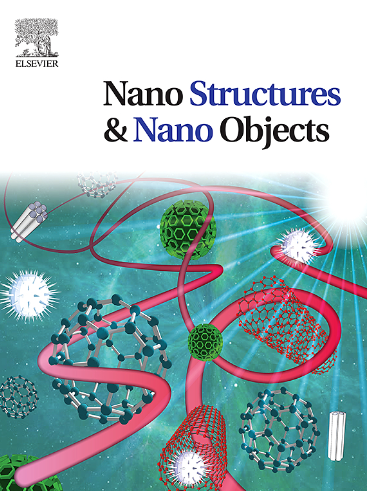Synthesis of polystyrene by the ATRP process with a catalyst based on a novel copper (II) thiadiazol complex: Investigation and application
IF 5.45
Q1 Physics and Astronomy
引用次数: 0
Abstract
There are majority ways to design polymeric materials including the synthesis of polymers with molecular weights in a given range and their modification with different nanoparticles to create composites. Due to this, the synthesis of a novel catalyst based on a copper thiadiazol complex for the ATRP polymerization to develop polystyrene (PS) and metal-organic framework (CrMOF, accepted abbreviation MIL-101) based on chromium (III) and trimesic acid by a novel approach was carried out to obtain novel composite material. The developed PS and PS/CrMOF composite were applied as membranes in pervaporation for the hydrazine concentration to evaluate their potential use as membrane materials. The structural and physicochemical properties of synthesized substances and developed composites were studied by various analysis methods.
新型铜(II)噻二唑配合物ATRP法合成聚苯乙烯的研究与应用
设计聚合物材料的方法有很多,包括合成分子量在一定范围内的聚合物,并用不同的纳米颗粒对其进行改性以制造复合材料。因此,采用新方法合成了一种基于铜噻二唑配合物的新型催化剂,用于ATRP聚合制备聚苯乙烯(PS)和基于铬(III)和三羧酸的金属有机骨架(CrMOF,公认缩写为MIL-101),以获得新型复合材料。将制备的PS和PS/CrMOF复合材料作为膜进行渗透汽化,测定联氨浓度,评价其作为膜材料的应用潜力。采用各种分析方法研究了合成物质和开发的复合材料的结构和物理化学性质。
本文章由计算机程序翻译,如有差异,请以英文原文为准。
求助全文
约1分钟内获得全文
求助全文
来源期刊

Nano-Structures & Nano-Objects
Physics and Astronomy-Condensed Matter Physics
CiteScore
9.20
自引率
0.00%
发文量
60
审稿时长
22 days
期刊介绍:
Nano-Structures & Nano-Objects is a new journal devoted to all aspects of the synthesis and the properties of this new flourishing domain. The journal is devoted to novel architectures at the nano-level with an emphasis on new synthesis and characterization methods. The journal is focused on the objects rather than on their applications. However, the research for new applications of original nano-structures & nano-objects in various fields such as nano-electronics, energy conversion, catalysis, drug delivery and nano-medicine is also welcome. The scope of Nano-Structures & Nano-Objects involves: -Metal and alloy nanoparticles with complex nanostructures such as shape control, core-shell and dumbells -Oxide nanoparticles and nanostructures, with complex oxide/metal, oxide/surface and oxide /organic interfaces -Inorganic semi-conducting nanoparticles (quantum dots) with an emphasis on new phases, structures, shapes and complexity -Nanostructures involving molecular inorganic species such as nanoparticles of coordination compounds, molecular magnets, spin transition nanoparticles etc. or organic nano-objects, in particular for molecular electronics -Nanostructured materials such as nano-MOFs and nano-zeolites -Hetero-junctions between molecules and nano-objects, between different nano-objects & nanostructures or between nano-objects & nanostructures and surfaces -Methods of characterization specific of the nano size or adapted for the nano size such as X-ray and neutron scattering, light scattering, NMR, Raman, Plasmonics, near field microscopies, various TEM and SEM techniques, magnetic studies, etc .
 求助内容:
求助内容: 应助结果提醒方式:
应助结果提醒方式:


